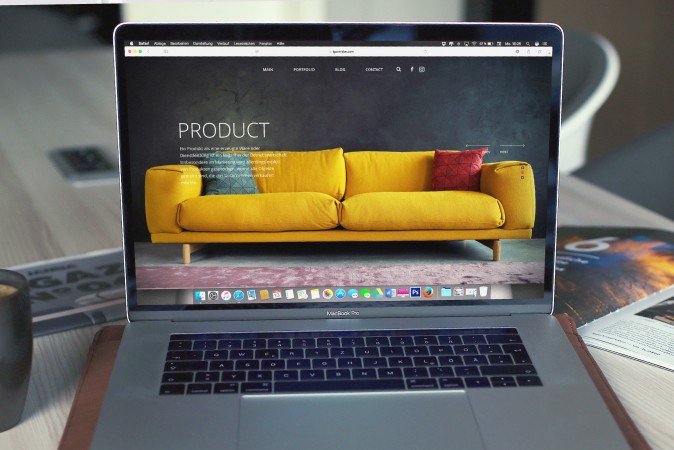The use of configurators in e-commerce

Discover the future of e-commerce with our tailor-made configurators! Enhance customer satisfaction, differentiate yourself from the competition, and maximize your revenues. Offer personalized products in real-time that customers will love. Revolutionize your online business now! 🚀 #ECommerce #Configurators #Individuality
Classification
In today's digital era, where online commerce is booming more than ever, online shops must provide innovative and individual solutions to meet the needs of their customers. Sometimes it involves the customization of products, sometimes it's challenging to find the right version of a product due to numerous variations, or there are products—kitchens, for example—that need to be configured for a given environment. For these challenges, there is a tool that has proven to be extremely effective, namely configurators. But what are configurators, and how can they help an online shop stand out from the crowd?
What are configurators in e-commerce and what are they used for?
Configurators in e-commerce are online tools that enable customers to customize and design products according to their individual preferences. These customizations can involve various aspects such as color, size, material, and features. They not only provide a personalized shopping experience but also allow buyers to create products that perfectly match their needs and desires.
The connection between configurators and product data from PIM systems
The seamless integration of configurators into e-commerce platforms is facilitated by Product Information Management (PIM) systems. PIM systems serve as a central data source for product information and facilitate the management of data related to products, including their variants and configuration options. By pulling product information from the PIM system, configurators can ensure that customers always have access to the most up-to-date and accurate information.
Examples of the use of configurators in e-commerce
Customized sports equipment
An online sports store offers its customers the opportunity to customize sports equipment such as running shoes, tennis rackets, or bicycles according to their own preferences. Customers can not only choose color and design but also adjust technical details such as size, weight, and material. The configuration is done through a user-friendly configurator directly connected to the shop's PIM system. This ensures that customers receive exactly the product that meets their requirements.
Customized furniture
A furniture store offers the option to order custom-made furniture pieces. Customers can individually customize the dimensions, colors, fabrics, and even the arrangement of the furniture components. The configurator pulls product information from the store's PIM system to ensure that all options and variations are accurately represented. This way, customers can design and order their dream furniture that fits perfectly into their living spaces.
Clothing
Configurators for T-shirts and sweatshirts are intuitive and user-friendly. Your customers can, for example, choose from various cuts, fabrics, and colors. Do they want a classic crew-neck T-shirt or a casual V-neck shirt? Do they prefer cotton, linen, or perhaps sustainably produced materials? The process is simple and enjoyable. Once the basics are set, customers can unleash their creativity.
And an extensive image database allows customers to choose from hundreds of pre-made designs, graphics, and illustrations or even upload their own. They can customize the size, position, and colors of the graphics to create a unique design. And the best part? They see instantly how their shirt will look while they're designing it. This live preview feature not only enhances customer satisfaction but also the conversion rate.
Benefits for Companies through the Use of Configurators
The implementation of configurators brings various benefits to companies, as illustrated by the following examples:
-
Personalized Customer Interaction: Configurators allow companies to tailor products and services to the unique needs and preferences of each customer. Customers can customize their product according to their preferences, leading to higher customer satisfaction.
-
Increased Customer Satisfaction and Loyalty: Offering customized products significantly enhances customer satisfaction. Satisfied customers are more likely to make repeat purchases and leave positive reviews, contributing to strengthened customer loyalty.
-
Differentiation from Competitors: Companies employing configurators stand out from competitors who offer only standardized products. This differentiation can attract customers seeking unique and individualized products.
-
Efficient Production and Delivery Processes: Configurators are often integrated into production and delivery processes. Data generated by the configurator can be directly forwarded to the production department, optimizing production processes and reducing delivery times.
-
Reduction of Returns and Exchanges: Allowing customers to customize products before purchase increases their satisfaction with the end product. This reduces the likelihood of returns and exchanges, making it more cost-effective and, importantly, more sustainable for the company.
-
Collection of Valuable Data: Configurators enable companies to gather valuable data about their customers' preferences and needs. This data can be used for developing new products, conducting marketing analyses, and enhancing the overall customer experience.
-
Cross-Selling and Upselling Opportunities: When customers configure products, companies can recommend additional options or accessories that complement their configuration. This opens opportunities for cross-selling and upselling, potentially increasing average order values.
In summary, configurators can enhance the customer experience, strengthen customer loyalty, improve the efficiency of production processes, and enlarge a company's competitive advantage.
Implementation Steps for Configurator Deployment
If you intend to implement a configurator, we recommend the following steps:
-
Target Audience Analysis: Before implementing a configurator, it's crucial to understand the needs and preferences of your customers. What options would they like to customize? Which features would be useful to them? By understanding your customers, you can ensure that the configurator meets their expectations.
-
Technical Analysis: Begin by capturing the structure of your product data flows and examining how your online shop interacts with your ERP. There are various configurator tools on the market. At EIKONA Media, we're happy to help you determine which one best suits your requirements, emphasizing usability, flexibility, and integration with your existing system. Sometimes, simple filters may suffice, or we may recommend a custom development.
-
Design and User-Friendliness: Ensure that the configurator's design is intuitive and provides a good user experience. Customers should easily understand how to customize the product without navigating through complicated menus. At EIKONA Media, we have UX specialists who can assist you in this regard.
-
Integration with Existing System: The configurator must seamlessly integrate into your existing website. It should look and feel like a natural part of your website rather than a bolted-on tool.
-
Thorough Testing: Before going live with the configurator, conduct comprehensive tests. Verify that all functions run smoothly and that there are no errors. Also, test the configurator from the perspective of customers to ensure it is truly user-friendly.
-
Provide Support: Even if the configurator is easy to use, some customers may need assistance. Ensure that it's easy to get help, whether through live chat support, an FAQ page, or a customer service hotline.
-
Collect Feedback: After the configurator is live, gather feedback from your customers. Listen to their suggestions and insights to continuously improve the configurator and adapt to changing customer needs.
Remember that implementing a configurator is not just a technical decision; it significantly influences the customer experience. By ensuring the configurator is simple, intuitive, and customer-oriented, you can ensure it has a positive impact on your business.
Conclusion
Configurators in E-Commerce – Personalized Experiences, Successful Businesses
The use of configurators in E-commerce presents an exciting opportunity to revolutionize the customer experience. By providing customers with the ability to customize products according to their individual preferences, businesses not only create tailored solutions but also forge a strong emotional connection. Configurators enable the precise fulfillment of customer needs, offering a unique shopping experience that goes beyond standard products. They not only enhance customer satisfaction and loyalty but also provide valuable insights into customer preferences and trends. Overall, configurators enhance the competitiveness of businesses by placing individuality and creativity at the core of their offerings. Through careful integration and continuous customer feedback, configurators can become a key tool for success in E-commerce, delighting customers in the long run.
